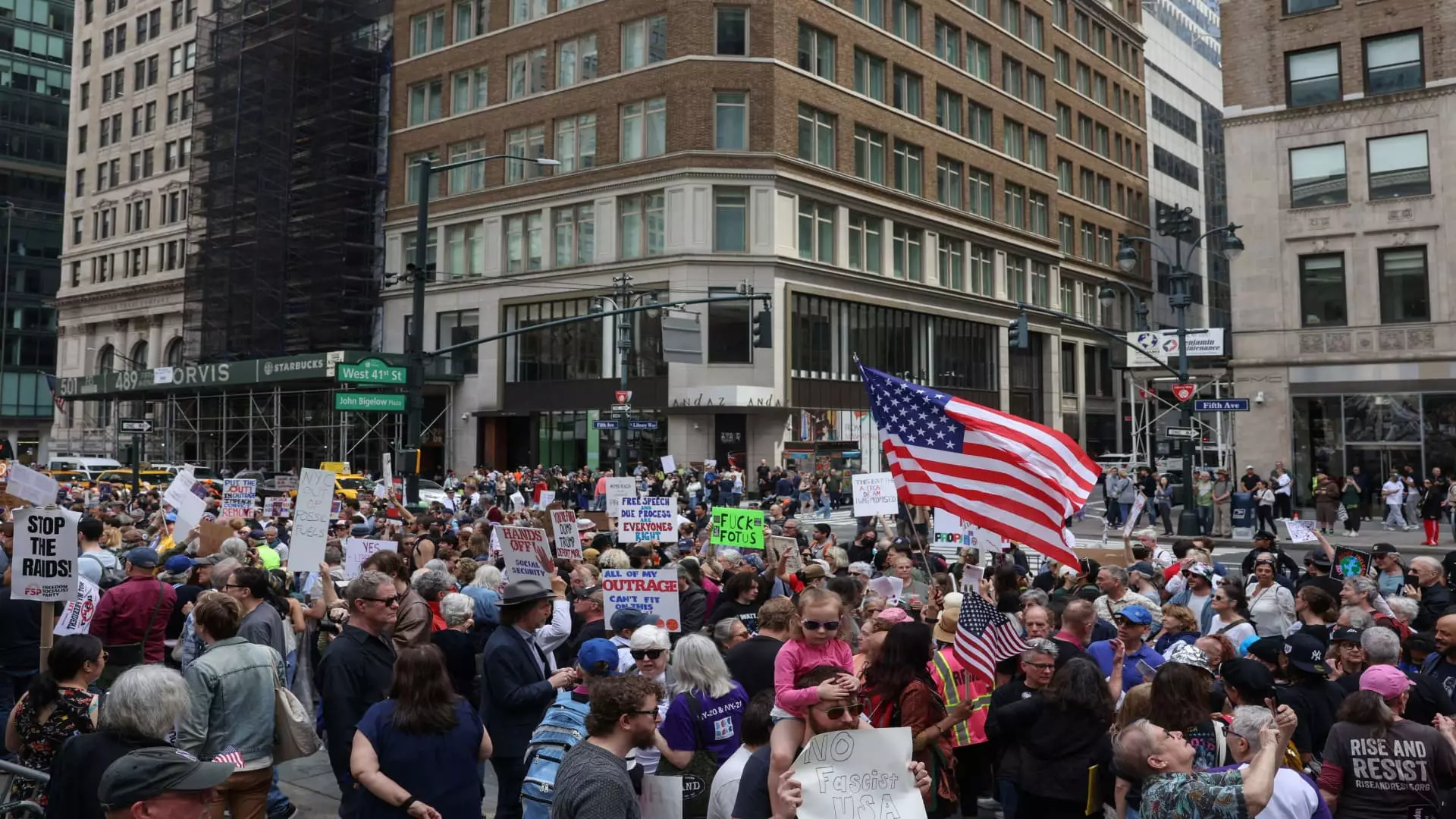In the United States today, there exists an urgent and palpable discontent bubbling beneath the surface, crystallizing into an empowering movement opposing the current administration’s actions and policies. From cities filled with skyscrapers to quaint towns steeped in history, citizens rallied on a single day, galvanized by a shared commitment to uphold democratic values that appear increasingly threatened. This collective outcry was manifested in myriad ways—protests, community service events, and historic reenactments—all aiming to reaffirm the long-standing principles upon which this nation was founded.
This groundswell of opposition speaks to a significant dissatisfaction, fueled by a perception that the liberties and rights of individuals are under siege. The Trump administration has faced allegations of fostering an environment ripe for civil rights violations, including draconian immigration policies and a systematic dismantling of institutions meant to protect citizens. It’s time for all those who hold dear the tenets of liberty and justice to stand in solidarity—this is a battle for the soul of America, one that cannot go uncourageously contested.
The Echoes of History: Lessons from the Past
In the heart of Concord, Massachusetts, where Americans once fired “the shot heard ’round the world,” the symbolism was unmistakable. The notion that freedom comes at a cost resonates powerfully, especially for older generations who remember the sacrifices made to secure civil liberties. For example, Thomas Bassford, a spirited 80-year-old, echoed this sentiment when he urged younger generations to heed the lessons of Revolution: resistance and vigilance against encroaching tyranny. This historical analog does not only remain relevant; it beckons us to understand our current struggle as one in a long line of fights for justice.
Activists at various demonstrations recast their struggles in terms of revolutionary spirit. They evoked fierce declarations such as “no kings” and called for resistance against an oppressive regime, a stark reminder that the fight for justice is often historical and cyclical. With each passing demonstration, these sentiments resonate more by illuminating the resilience of a populace that refuses to be spectated upon while its rights are eroded.
A Coalition of Concern
The opposition, though multifaceted, has cultivated a coalition of individuals united in their grievances. From retirees like Bob Fasick, who lament the potential loss of federal programs, to concerned parents worried about children’s futures under a looming authoritarian landscape. These voices converge around a central theme of alarm regarding the rising specter of a “police state.” The claims of executive overreach and disregard for due process highlight a deteriorating relationship between the branches of government—a misalignment that endangers the very framework of democracy itself.
Furthermore, demonstrators spanning all walks of life identified shared anxieties; the deportation of immigrants, inadequate protections for marginalized communities, and the efforts to dilute the safety nets for the most vulnerable, exemplify how these issues are woven into a broader narrative of systemic fear and division. The recognition of threats as interconnected gives strength to the movement—it’s not merely about opposing one figure; it’s about protecting a collective future.
Community as the Heartbeat of Change
While protests form the loudest expressions of dissent, quieter gestures are equally telling. Food drives, volunteer activities, and teach-ins resonate with an ethos of activism that emphasizes community resilience. This is a critical component of protests: they reflect not just outrage but a desire to build—from the ground up—a more equitable society. While some may debate the effectiveness of large rallies versus local action, the integration of both reveals a nuanced strategy that affirms the power of civic engagement.
In every chant and placard, there resides an urgency that belies mere dissatisfaction; there exists a clear call to action, urging others to partake in the democratic process actively. It serves as a reminder that the responsibility of preserving freedom does not rest solely on the shoulders of elected officials but is shared by every citizen who cares about the future of their rights.
Amidst this cacophony of voices, one truth must reverberate clearly: the time to act is now, lest history—as it so often does—teaches a lesson in missed opportunities for both accountability and participation. Citizens are being called upon to awaken from apathy, for this is not merely a political battle but a profound ethical one that hinges upon the principles of human rights and dignity.

Leave a Reply